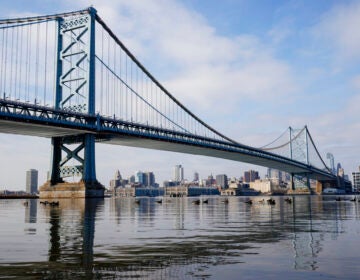Study: More than $1B in N.J. property value gone since 2005
In New Jersey, more than $1 billion of relative property value has disappeared, with Long Beach Island losing $541 million and nearly $531 million gone in Ocean City.

Tidal flooding in Stone Harbor in Feb. 2016 as photographed by Zeke Orzech (@Zeke_O via Twitter).
The Jersey Shore is already being hit hard by climate change, new data shows.
A study released by the First Street Foundation, a nonprofit organization that studies sea level rise, indicates that tidal flooding has washed away $14.1 billion in relative property value across eight Eastern seaboard states between 2005 and 2017.
In New Jersey, more than $1 billion of relative property value has disappeared, with Long Beach Island losing $541 million and nearly $531 million gone in Ocean City, according to the study.
The impact is particularly extreme in Ocean City compared to the entirely of the Long Beach Island, which is comprised of multiple municipalities.
Other New Jersey communities on the property value loss list include Sea Isle City (over $200 million); Atlantic City, Avalon, and Brigantine (all over $150 million); and North Wildwood and Mystic Island (both over $100 million).
The researchers say they were able to isolate the impact of increased tidal flooding due to sea level rise by taking into account the characteristics typically associated with home value and economic trends since 2005.
“This is the first market indicator that rising seas and related flooding have depressed home values,” said Steven A. McAlpine, head of data science at the First Street Foundation.
Dr. Jeremy R. Porter, a Columbia University professor and First Street Foundation statistical consultant, said the research results are consistent across the Eastern seaboard.
“Americans across 8 states have already lost $14.1 billion from increased flooding caused by sea level rise, and all signs are pointing to this being an accelerating trend,” he said.
The peer-reviewed analysis was published in the academic journal Population Research and Policy Review.
In June, a National Oceanic and Atmospheric Administration report found that high-tide flooding, sometimes called sunny-day or “nuisance flooding,” tied or set records last year in more than a quarter of the 98 places the agency monitors around the country.
“Though year-to-year and regional variability exist, the underlying trend is quite clear: Due to sea level rise, the national average frequency of high tide flooding is double what it was 30 years ago,” the report said.
Ben Horton a Rutgers University researcher who was not involved in the study, called it “a warning, a shot across the bow.”
“Across the whole of the U.S. coastline, we are in dire need of action,” he said.
In addition to the conclusions of the report, Horton said it is just as significant that “this is a federally funded sea-level assessment funded by the Trump Administration, and it shows that the problems on our coasts are getting worse and will get worse.”
The Republican president has derided climate change as a hoax.
The Associated Press contributed to this report.
WHYY is your source for fact-based, in-depth journalism and information. As a nonprofit organization, we rely on financial support from readers like you. Please give today.




